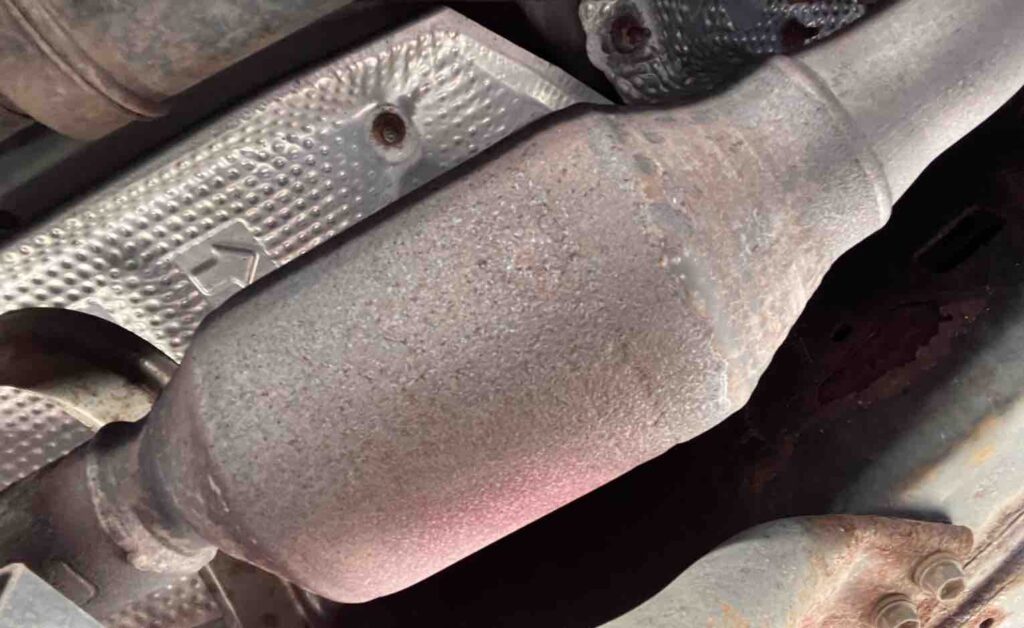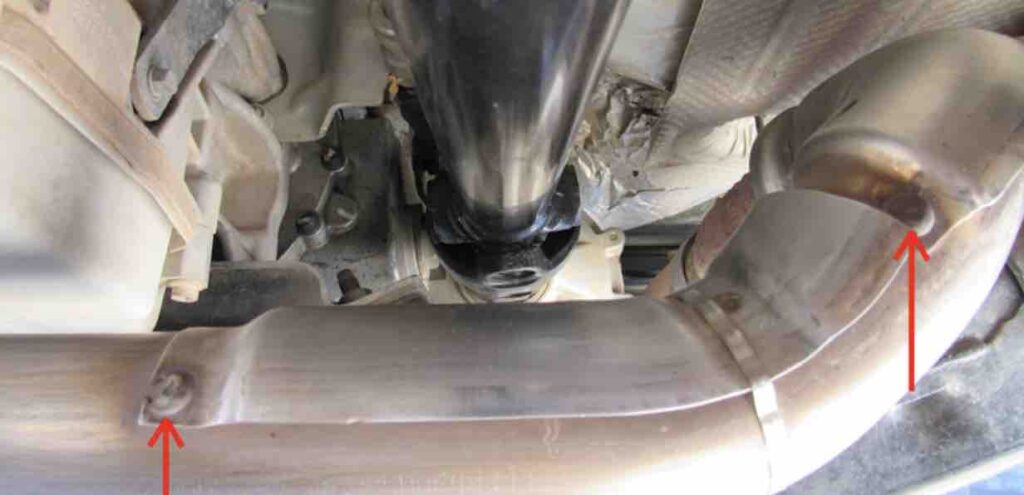Last updated on February 20th, 2023 at 08:42 am
Hi, welcome to this post on catalytic converter recycling, where I will fill you in on everything you need to know about recycling Catalytic Converters for profit. So if you have ever asked yourself the question, “are catalytic converters recyclable”? or you wish to know how to Recycle your Catalytic Converter or what is involved in catalytic converter recycling process. Then stay with me as I discuss all those topics and more in this post.
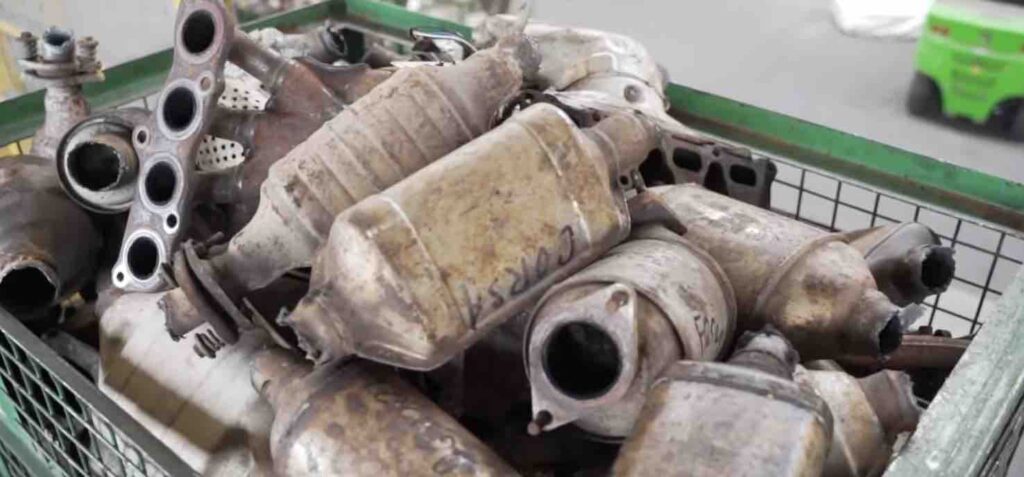
But before we dive right into the nitty-gritty of how to recycle your catalytic converter, let’s quickly look at why a catalytic converter is important in the first place.
Catalytic converters play a vital role in reducing vehicle emissions by helping keep our air clean. Without catalytic converters, our streets would be filled with smog or polluted air… well, let’s say it wouldn’t be pleasant.
So, not only are you making some money, but you’re also doing your part for the environment.
Read also: Overheated Cat Symptoms & Signs Of A Bad Catalytic Converter
How do catalytic converter recycling companies recycle catalytic converter
Let now begin fully with the first question, can catalytic converters be recycled?
Can catalytic converters be recycled?
Well, the short answer is yes, catalytic converters for sure can be recycled, and according to springers and market watch, recycling catalytic converters is highly profitable, estimated to be a USD million in 2022 business and is expected to have over 100% increase in the year 2023.
Catalytic converters are made of various valuable metals, such as platinum, palladium, and rhodium, which are valuable and can be recovered and reused in the production of new catalytic converters and other products. This is why there is a rising market for it, and if you are reading this, I am sure you want to tap into the rising cat recycling market. Or maybe you want to sell an old abandoned cat converter you have in your garage.
But before you start digging through your garage for old catalytic converters, I like to that not all converters are created equal. Different catalytic converter manufacturers and models may use different types of metals and materials during the creation process, which affects the value and recycling worth of the converter.
However, regardless of the type of catalytic converter you have or wish to recycle, it is definitely a great way to reduce the environmental impact of mining for new metals and to conserve resources. So, with the right awareness and equipment, anyone can basically recycle catalytic converters and make a profit from doing something good for the environment.”
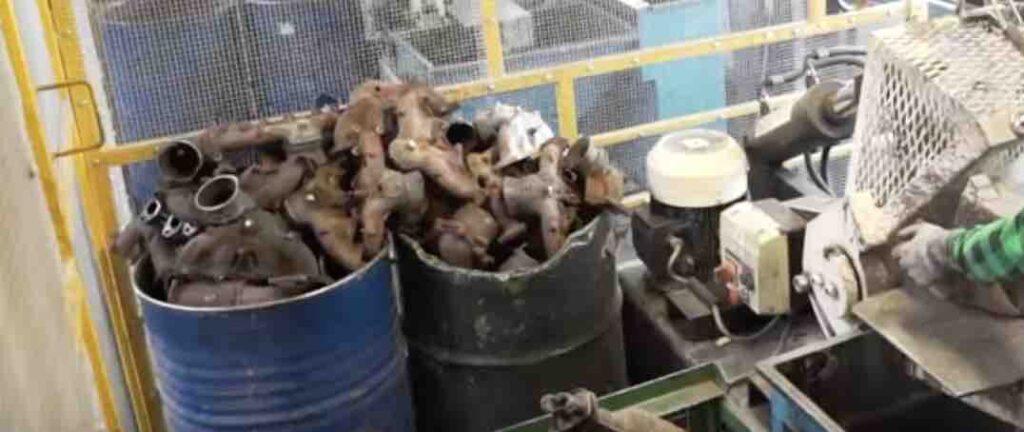
What is catalytic converter recycling?
Catalytic converter recycling is the act of removing or retrieving valuable metals from old, used, or damaged catalytic converters for either reusing other vehicles or producing other industrial machines. The process includes removal, disassembling, and metal extraction for reuse in new converters or industrial products. This process helps conserve resources and reduces landfill impact.
Why should catalytic converters be recycled?
Recycling Catalytic converters is the best way to recycle and divert as much waste from landfills to a more resourceful use.
So what is the benefit of recycling catalytic converters?
Some of the benefits of repurposing Catalytic converters can be summarized below:
- First, the process of mining and fabricating metals is a labor-intensive and expensive process, so when we recycle catalytic converters, it helps with reducing the cost of mining new metals. Mining requires expensive processes and dangerous chemical treatments. Looking at Platinum ore, for example, has to be mined from deep tunnels, which practically requires a lot of digging energy and large quantities of ore to produce a substantial amount of platinum (one ounce of platinum per ton). To make the metal, the platinum ore must first be extracted. And suppose you are familiar with this metal. In that case, you will know that platinum ore is harmful to the environment and poses a problem, not only to the mine workers, who are often underpaid and have to work in difficult conditions but also to the surrounding environment and those living around them.
- The second benefit of recycling catalytic converters is that you will get money for your catalytic converter if you sell it to scrap metal dealers or recycling companies.. So, in essence, you are making money from keeping the climate from depleting by recycling catalytic converters, which is the most purposeful thing to do.
With that in mind, let now look at the steps you need to take when Recycling Catalytic Converters.
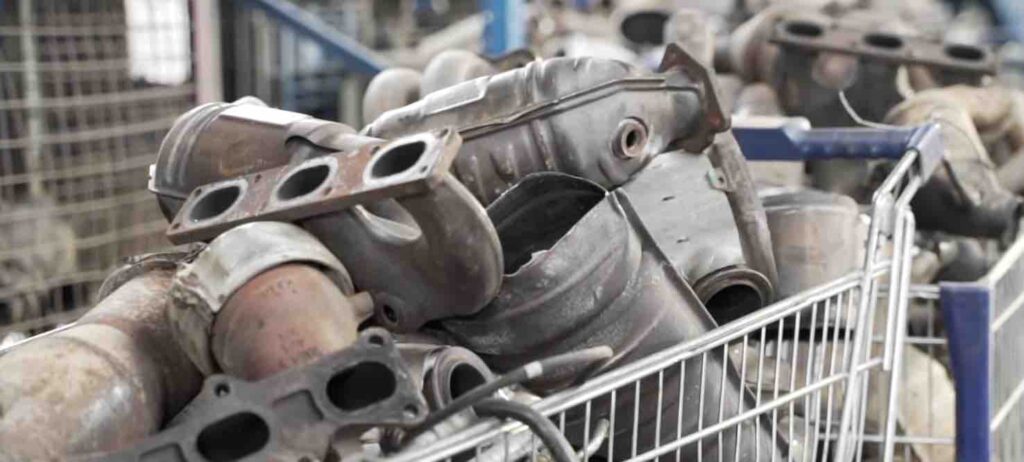
Implications of not recycling Scrap Cat Converters.
So what will really happen to the materials cat if will not recycle them?
First off, it will lead to a huge waste of reusable resources and an immense waste to our environment.
Say, for instance, to make a typical 18k gold (5g) wedding ring, around 2,000 kilograms of rock is excavated and dug up, which requires a lot of men’s power or machinery. That is so much energy for just something that small.
It is estimated that over 5% of the energy we use globally is used for grinding rocks. You know this is a huge amount of energy.
So thinking of this, you will agree that mining and fabricating metals requires labor and energy, and is expensive and time-consuming.
As motioned earlier, during the production of Platinum ore, for example, it first has to be mined from deep tunnels. After it is extracted, the miner will have to treat the Platinum ore with chemicals like aqua regia to achieve the metallic state.
According to Umass Amherst University, this aqua regia is very corrosive and can lead to an explosion, and skin burns if not properly handled.
In summary, recycling any kind of metal mitigates the harm that is posed by creating new ones.
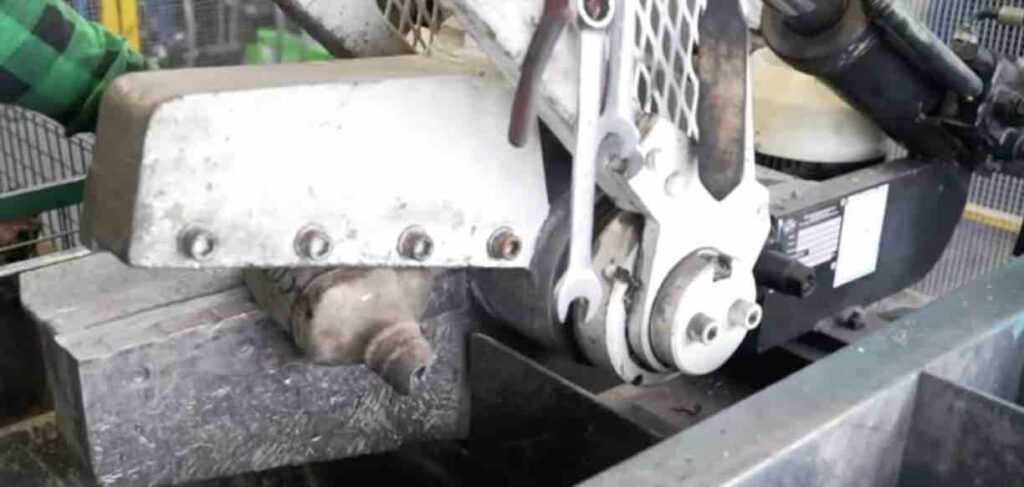
How are Catalytic Converters Recycled
So how is catalytic converter recycling done, well, there is a general process that sums up into 4 processes:
- First, receiving the cat converter by the Recycling company.
- Evaluating and identifying what kind of catalytic converter contains,
- Next, breaking open, and extracting ceramic monolith from the cat.
- And finally, the ceramic monolith is put into barrels and crushed to obtain a homogenized material.
This is the general process; however, each company might have slightly different steps that meet their specific recycling and production process.
Let’s look at Uni Metal Recycling company, for instance. A leading company in the European market, receiving over 75,000 catalytic converters in January 2021, equivalent to collecting 3500 catalytic converters per day.
Uni Metal has 91 partner points in Poland and 29 representative offices worldwide that provide them with converters on a global scale.
So Uni Metal Recycling company, when catalytic converters arrive at the Uni Metal Recycling plant, the converters are weighed to ensure accurate measurement.
Then the value of each item is determined based on the current foreign exchange rates and prices of precious metals on world markets.
The actual content of precious metals within the cat is then determined through a chemical analysis conducted with an ICP-MS spectrometer in the company’s lab.
Next, the catalytic converters are then cut and separated into individual elements using hydraulic cutters. After that, the ceramic monolith is placed into barrels and crushed to obtain a homogenized material, from which a representative sample is taken for measurements.
The elements’ content is determined using an X-Ray Fluorescence Spectrometer, and the percentage share of platinum, palladium, and rhodium is calculated.
The ground ceramics are ultimately delivered to specialist mills for the extraction of valuable natural resources, with 90% of the resources being reused to spray catalytic converters, and the remaining 10% are then channeled to other industries, such as the medical and jewelry industries for fine-tuning of pieces of jewelry.
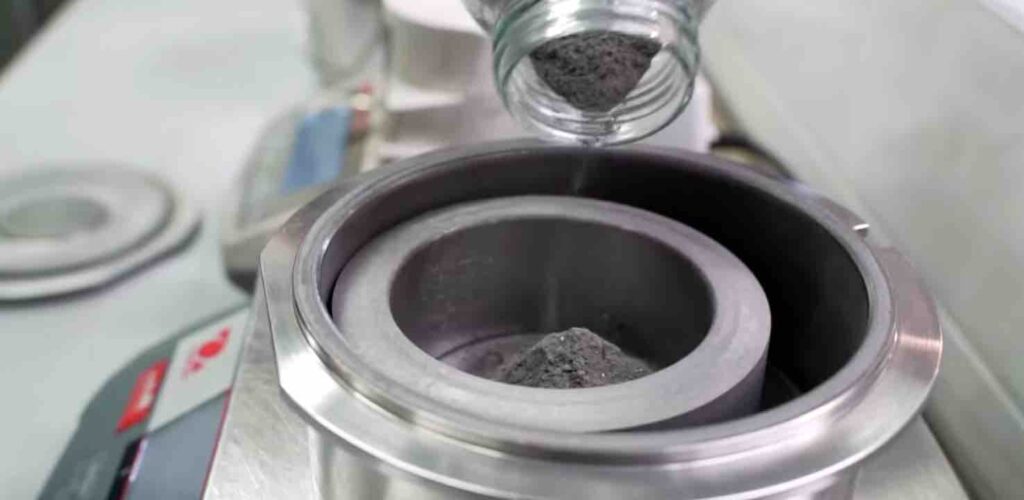
Steps Recycling Catalytic Converters
So, when you’ve decided to recycle your catalytic converter, but where do you start?
Step 1: Search for a reputable metal recycler
The first step on your side is to find a reputable metal recycler who specializes in catalytic converter recycling. And there are many ways to find a good and trustworthy recycler.
Here are some of the places to look for:
- You can search online or check out this site I have personally vetted for you.
- Ask for recommendations from mechanics or from friends who have had experience recycling catalytic converters.,
- Look for advertisements in local newspapers or online classifieds.
Once you’ve found a few recyclers, just make sure to check their reputation. You can do this by reading reviews or asking for references. You want to choose a recycler with the fairest prices and a proven track record of ethical and professional business practices. (See our scrap catalytic converter price guide)
Now that you’ve found a befitting recycler, it’s time to get your hands dirty; this is when digging in your garage or taking out the cat converter from your vehicle. But before you be sure to read this article “Cat Delete,” the Pros and Cons and it is Illegal? Maybe you might change your mind.
Step 2: Remove the catalytic converter
Catalytic converters can be removed from a vehicle by a trained professional or by yourself and off-cause with the proper tools. Please know I do not recommend you take out the catalytic converter yourself because the metals within the catalytic converter can be dangerous and may cause you harm.
Here are some catalytic converter removal tools your will need:
- Jack stands,
- Ratchet and socket set
- Oxygen sensor socket (optional)
If you’re removing the converter yourself, make sure to follow the manufacturer’s instructions and use proper safety equipment such as gloves, glasses, and a mask to protect yourself from toxic fumes and dust.
Cut the converter from the exhaust pipe as close to the flange as possible to preserve as much metal as possible. You may want to see this post on steps for removing a cat from a car.
Step 2: Take the Removed cat to the recycler.
After removing the converter, it’s time to take it to the recycler. When you arrive at the recycler, be prepared to provide the make, model, and year of the vehicle the converter was removed from.
The recycler will then weigh the converter and examine it to determine its metal content and value.
The assessment process may include:
- Cutting open the converter
- Analyzing the metal type, you cat contain using a metal analyzer
- Or using a spectrometer to identify the metals contained in the converter.
Once the assessment is complete, the recycler will make an offer based on the value of the metals contained in the converter. If you accept the offer, the recycler will then begin the recycling process. This typically involves disassembling the converter, removing the metals, and refining them for reuse. The metals are then melted down and separated into their individual units, such as platinum, palladium, and rhodium.
Though the process of catalytic converter recycling may seem difficult, but with the help of a good and referral recycler, it can be a simple and also very profitable endeavor.
Conclusion
catalytic converter recycling is an important aspect of keeping our planet clean and conserving our precious natural resources.
The process of recycling catalytic converters involves the extraction of valuable metals like platinum, palladium, and rhodium, which are then reused to make new catalytic converters.
This not only reduces the amount of waste going into landfills but also helps to preserve these valuable metals.
So the next time you’re thinking of getting rid of your old cat, remember that those catalytic converters are like a little treasure trove of riches just waiting to be recycled. And who doesn’t love a good treasure hunt, right?
So in the article, I have shown all you need to know about recycling Catalytic Converters, the benefit of recycling catalytic converters, how Catalytic Converters are Recycled, and even how to Recycle a Catalytic Converter if it is something you want to get into.
We also looked at the question, are catalytic converters recyclable? And Can catalytic converters be recycled? I hope this post was able to help you out. Please share if it helped.

Uchenna is a Radiographer and Auto parts mechanic who recently got his automotive diploma as an auto repair technician, and since then, has worked on fixing various car problems.
Working as just a radiographer, Uchenna didn’t just get all the fulfillment he desired, because he truly loved doing things tilted toward cars. As a kid, he would take apart his toy cars to see how they worked and would spend hours tinkering with his bike.
So, in 2017 he made the tough decision to become an auto mechanic. He threw himself into his studies and now loves every aspect of what he does.
He gets to work with his hands, solving problems and bringing cars back to life, and sharing his knowledge and easy quick-fix guide online are all part of what makes him feel fulfilled.

